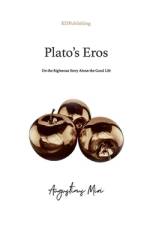- On the Righteous Story About the Good Life
av Augustinus Miri
185,-
Have you ever read the Symposium but been left wondering? Have you ever asked yourself what philosophy is? Or why bother with philosophy at all? This book unfolds a consciousness of Plato's Eros. Eros is Plato's concept in the Symposium of a philosophy of consciousness that emerges from a poetry of beauty. To Plato, Eros is not a synonym for something specific or an expression of love, but embodies opposing views and different perceptions. As an opposite principle, Eros inspires our heart to feel, our mind to wonder and our intellect to think. At its heart, the book illustrates how Plato transforms storytelling into poetry about the heart of consciousness, as an infinitely poetic expression of our power to create, explore and understand. Because to Plato, the purpose of storytelling is not to seduce us with moral messages to learn from, but to inspire the wonder that can make us the true tellers of our own stories. Extract: "Plato's dialogues do not give us answers. They engage in a dialogue with concepts, examining how concepts are constructed from our narratives. On the one hand, concepts are created by persuasive narratives made up of words, phrases, and categorical beliefs. This has led us to see Eros as the most beautiful and therefore the one we love. But this makes Eros a great and deceptive happiness of what is the good, says Diotima. If we think of Eros as love, it is because historically, we have learned to love Eros as the most beautiful. On the other hand, we can learn to think with Eros." Quote: The Platonic project comes to light only when we turn back to the method of division, for this project is not just one dialectic procedure among others. It assembles the whole power of the dialectic in order to combine it with another power." (Gilles Deleuze The Logic of Sense, p. 291). Quote: "Why is it that Eros holds both the secret of questions and answers, and the secret of an insistence in all our existence?" (Gilles Deleuze, Difference and Repetition, p. 107).



